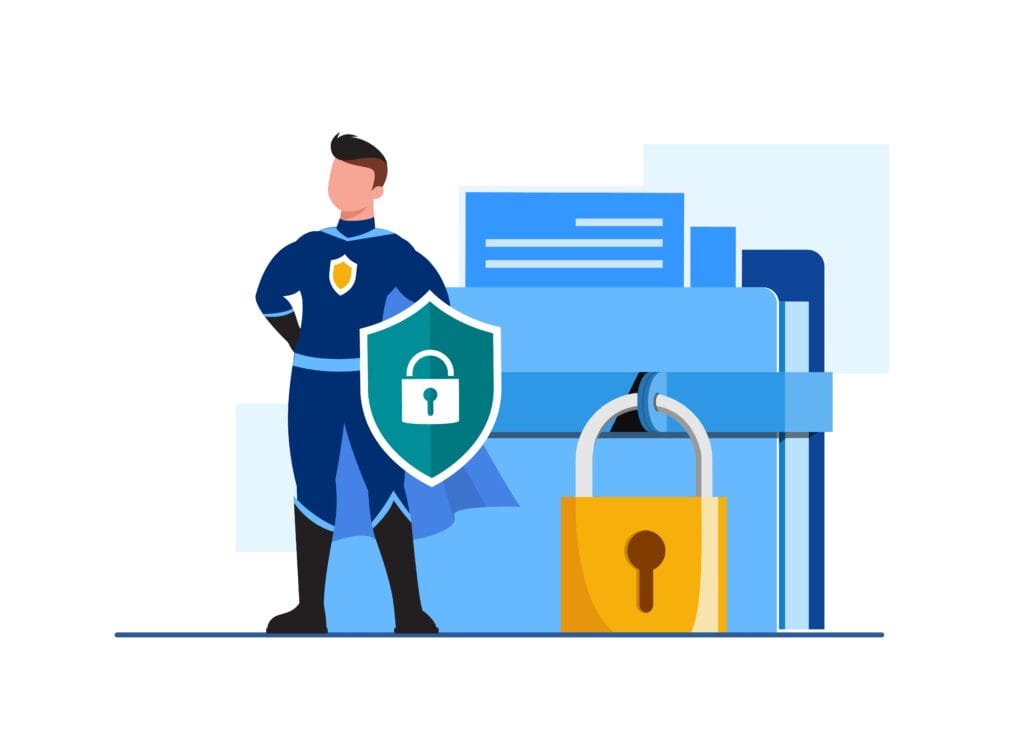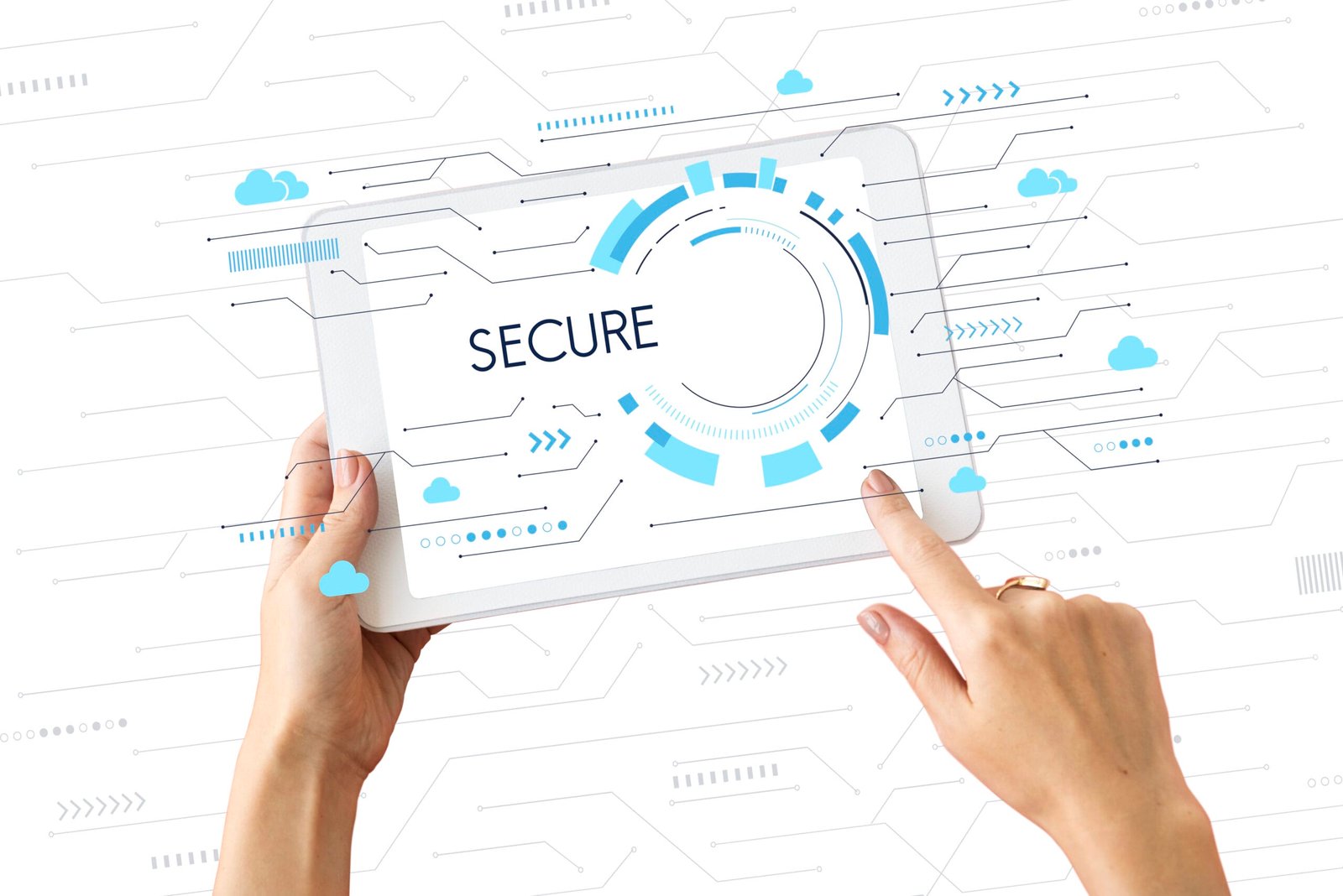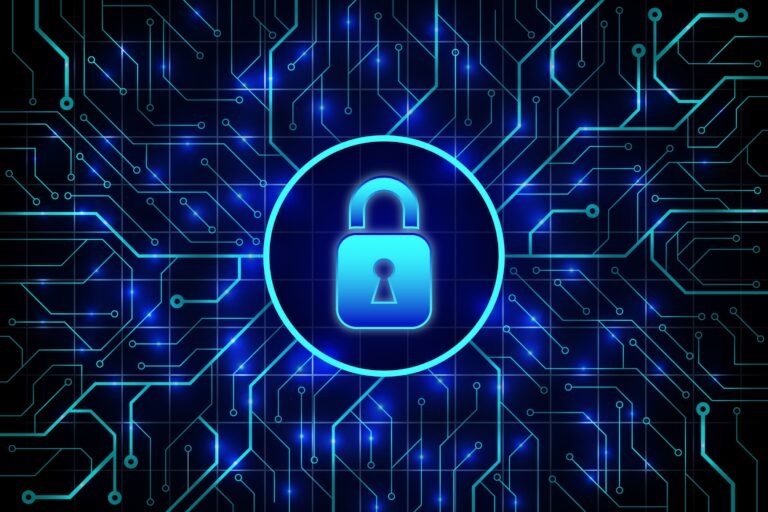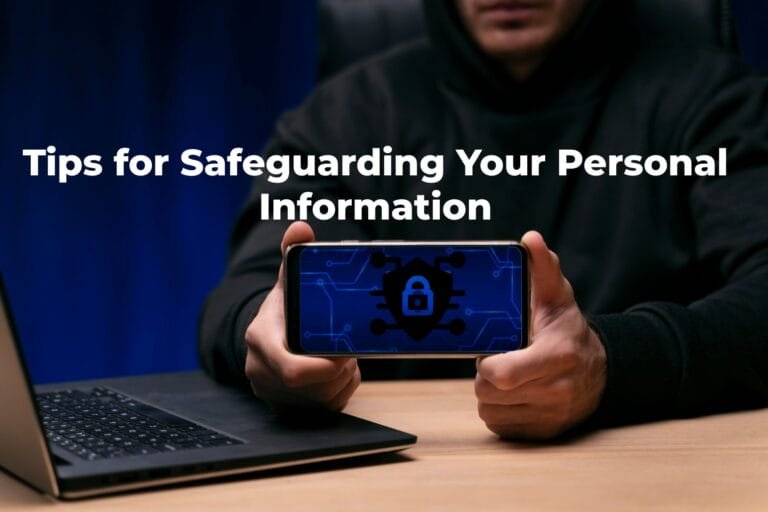Safeguarding Your Assets: Exploring Endpoint Security, Media Encryption, and EPM Excellence
In the connected digital world of today, protecting your assets from cyberattacks is critical. While technological advancements have increased efficiency and convenience, they have also created new security holes. Enterprise Performance Management (EPM), media encryption, and endpoint security are the fundamentals that support your protection against possible threats.
Introduction to Endpoint Security
What is endpoint security?
Endpoint security is the protection of different endpoints, which are gadgets that are connected to a network and include computers, smartphones, and other devices. It includes strategies and instruments made to protect these endpoints from possible online attacks.
Importance of securing endpoints
Cybercriminals use endpoints as points of entry. These devices must be protected since any weakness could result in data breaches, unwanted access, and even financial losses.
Understanding Media Encryption
In the current digital era, sensitive data security has become crucial since data is a vital resource for both individuals and businesses. One of the most important practices for ensuring the integrity and confidentiality of data stored on different media is media encryption.
Definition and Purpose
The technique of encrypting digital data such that it cannot be read without the right decryption key is known as media encryption. Protecting data at rest—that is, information kept on devices or in storage facilities—from illegal access or security breaches is the main goal of media encryption. Through the use of sophisticated algorithms, encryption transforms plain text into ciphertext, ensuring that even if data is intercepted, it cannot be decoded without the encryption key.
Media encryption extends its application across multiple storage mediums, including:
- Hard Drives: Data on computer hard drives can be encrypted to guard against loss or theft by preventing unauthorized access.
- USB Drives: Encrypting portable data storage units to protect private data when transferring information between systems.
- Cloud Storage: To preserve privacy and stop unwanted server access, data saved in cloud-based services is encrypted.
The core of media encryption is its capacity to reduce the risk of data exposure, ensuring that encrypted data will remain unreadable and unusable in the absence of the decryption key, even if a device is compromised or accessed by unauthorized people.
Types of Media Encryption
Symmetric Encryption
A single key is used for both data encryption and decryption in symmetric encryption, sometimes referred to as private-key encryption. For encrypting large amounts of data, this approach is quite effective and provides quick processing times. The difficulty, though, is in handling and distributing the encryption keys safely because any weakness in key security could expose data.
Asymmetric Encryption
A pair of keys is used in asymmetric encryption, often known as public-key encryption: a private key is used for decryption and a public key is used for encryption. By enabling data to be encrypted using the public key and only decoded with the matching private key, this technique ensures a better level of security. Digital signatures, key exchange systems, and secure communication routes all frequently use asymmetric encryption.
Disk Encryption
Disk encryption, which secures entire disks or partitions, works at a lower level than file-level encryption. It encrypts the whole disk’s contents, making the data unavailable even if the physical disk is taken out of service or gained access without authorization. A strong security protection for data saved on laptops and other devices is disk encryption, which ensures data security in the event of theft or loss.
File-Level Encryption
With file-level encryption, you have more precise control over the protection of your data by encrypting specific files or folders. Users can choose which files or directories to encrypt, giving them flexibility in protecting private information while maintaining access to other data. When selective data encryption is necessary, file-level encryption is useful.
Knowing the specifics and advantages of various media encryption strategies enables people and businesses to choose the best approach for their data protection requirements. Adopting strong encryption procedures ensures sensitive data security and confidentiality, which makes a major contribution to overall data protection plans.
The Role of EPM in Security

A collection of techniques, procedures, and technological tools known as enterprise performance management, or EPM, are intended to help businesses track, manage, and enhance their overall performance. When it comes to security, EPM is essential for strengthening defenses inside a company and coordinating business goals with effective security plans.
Explaining EPM
Aspects of an organization’s operations such as financial planning, forecasting, budgeting, and performance monitoring are all integrated by EPM. Its main goal is to enable data-driven decision-making by offering thorough insights into the performance metrics and key performance indicators (KPIs) of a company. Stakeholders may evaluate the efficacy of current tactics and make well-informed decisions to maximize performance with this comprehensive view.
- Align Security Objectives with Business Goals: EPM facilitates the definition of security goals that are in line with the main business objectives. EPM makes sure that security measures are not isolated but rather attached across the entire firm by incorporating security into the larger organizational plan.
- Monitor Security Performance Metrics: Security-related KPIs can be tracked and analyzed thanks to EPM technologies and techniques. Performance evaluation procedures include metrics like incident response times, vulnerability remediation rates, and compliance adherence.
- Facilitate Informed Decision-Making: EPM provides decision-makers with the thorough data and analytics they need to make well-informed decisions about how to allocate resources, mitigate risks, and invest in security.
- Enable Proactive Risk Management: Enterprise Performance Management (EPM) enables businesses to proactively identify and resolve possible security risks before they become serious concerns by continuously monitoring security performance. By being proactive, vulnerabilities are reduced and overall security posture is improved.
Challenges in Endpoint Security
In the constantly changing field of cybersecurity, endpoint protection presents many important issues that need to be thoroughly addressed by enterprises. Endpoints are important targets for attackers because they are potential entry points for cyber threats, such as PCs, cell phones, and tablets. Maintaining a strong security posture requires an understanding of these issues and effective mitigation of them.
Common Issues and Vulnerabilities
- Outdated Software and Firmware: The existence of outdated firmware or software is one of the main issues with endpoint security. Systems that are not patched frequently have known vulnerabilities that hackers can use to obtain unauthorized access or carry out destructive actions.
- Weak Authentication and Access Controls: Inadequate access restrictions, single-factor authentication, or weak passwords make endpoints more vulnerable to unwanted access. Attackers use these holes in systems to get privileged access and compromise them.
- Human Errors and Insider Threats: Security breaches are still significantly influenced by human error. Endpoints are susceptible to internal threats, which can arise from intentional hostile actions by insiders or inadvertent behaviors such as clicking on phishing websites.
- Shadow IT and Bring Your Device (BYOD): Maintaining a uniform security framework across all endpoints is made more difficult by the rise of BYOD policies and shadow IT, which occurs when employees utilize unapproved software or devices. Maintaining uniform security protocols across a range of devices becomes a significant undertaking.
- Lack of Endpoint Visibility: It might be difficult to identify possible threats in complicated networks when there is insufficient endpoint visibility. Organizations may fail to notice suspicious behaviors until they become serious security events if they do not have the appropriate monitoring tools or endpoint detection systems in place.
Importance of Addressing These Challenges
These issues must be resolved to improve endpoint security and reduce the risks brought on by cyberattacks. If these problems are not resolved, there may be serious repercussions, such as:
- Data Breaches: Data breaches occur when sensitive information is exposed due to attackers using vulnerable endpoints as entry points into networks.
- Financial Losses: Payments for ransomware, fines from authorities, or interruptions to business operations can all be a consequence of cyberattacks that target endpoints.
- Reputation Damage: Customers’ trust and faith in a company are damaged by security breaches, which damage the company’s reputation.
- Legal and Compliance Issues: Failure to implement sufficient endpoint security measures by data protection standards may result in financial penalties as well as legal repercussions.
To address these issues, organizations need to take action. Key actions for reducing vulnerabilities and ensuring a strong defense against changing threats include putting in place strong security policies, performing routine patch management, educating staff members on cybersecurity best practices, and adopting advanced endpoint security solutions.
Best Practices for Endpoint Security

Strong defenses against changing cyber threats must be enhanced by putting in place effective endpoint security measures. By following best practices, you can make sure that endpoints—which are potential attack points—are secure and resistant to a range of threats.
Implementing Robust Security Protocols
- Endpoint Protection Software: Installing reliable antivirus and anti-malware software is essential for endpoint protection. These solutions offer malware infection prevention, suppression of malicious actions, and real-time threat detection.
- Firewalls and Network Segmentation: These techniques aid in managing traffic flow, reducing exposure to possible threats, and preventing lateral network movement in the event of a breach.
- Patch Management: It’s essential to update firmware, apps, and operating systems regularly with the most recent security patches. Patch management improves endpoint security by fixing known vulnerabilities.
- Strong Authentication and Access Controls: Limiting user privileges, enforcing strong password policies, and putting multi-factor authentication (MFA) in place all help to reduce the chance of unwanted access to endpoints.
Importance of Regular Updates and Patches
Required regular monitoring and timely upgrades are essential to preserving strong endpoint security:
- Closing Vulnerabilities: Consistent updates mitigate known vulnerabilities that security experts have found, lowering the possibility that hackers could make use of them.
- Enhanced Security Posture: New systems make sure that defenses against changing threats continue to work, improving the security posture as a whole.
- Protection Against Exploits: By patching known vulnerabilities, attackers are stopped from using security flaws to run harmful code or obtain unauthorized access.
Balancing Security and Usability
Although strict security protocols are necessary, businesses should also take productivity and usability into account:
- User Education: Hold frequent training sessions to inform staff members on phishing awareness, security best practices, and the significance of following policies.
- User Experience: Put security measures in place without making the user experience worse. Maintaining a balance between security and usability ensures that workers can accomplish their tasks effectively without compromising security.
Organizations may greatly bolster their defenses, reduce vulnerabilities, and lessen the dangers posed by cyber attacks to their endpoints and networks by implementing these best practices and making endpoint security a constant priority.
Media Encryption Techniques
To ensure the secrecy and integrity of digital data, media encryption uses a variety of methods and algorithms. Knowing these encryption techniques is essential to deciding which strategy is best for protecting sensitive data on various storage devices.
Encryption Algorithms and Methods
- Symmetric Encryption: Symmetric encryption encrypts and decrypts data using the same key. Commonly used algorithms include Data Encryption Standard (DES) and Advanced Encryption Standard (AES). Particularly known for its strength and effectiveness in data security, AES provides several key lengths for enhanced protection.
- Asymmetric Encryption: a public key for encryption and a private key for decryption. Two popular asymmetric encryption techniques are Elliptic Curve Cryptography (ECC) and Rivest-Shamir-Adleman (RSA). Without disclosing the private key, these algorithms enable digital signatures, secure communication, and key exchange.
- Hash Functions: From input data, hash functions such as SHA-256 (Secure Hash Algorithm 256-bit) produce fixed-size hashes. Hashing is a technique for securely storing passwords and ensuring data integrity. It works by permanently converting data into a distinct hash value.
- Disk Encryption Methods: To secure data at the storage level, disk encryption techniques encrypt whole drives or partitions. Examples include Self-Encrypting Drives (SEDs) and Full Disk Encryption (FDE). SEDs feature hardware-based encryption integrated into the drive itself, whereas FDE encrypts the entire disk.
When choosing the best encryption strategy for a given set of security needs, it is essential to comprehend the advantages and disadvantages of each methodology. When deploying media encryption, organizations need to consider many variables such as compatibility, performance impact, security level, and key management to successfully protect sensitive data.
Integrating EPM into Security Framework

The seamless integration of Enterprise Performance Management (EPM) into the larger security architecture is a critical component in fortifying an organization’s security posture. It greatly improves visibility, decision-making, and proactive risk management when used in conjunction with security measures, enhancing total asset safeguarding.
How EPM Complements Security Measures
1: Comprehensive Data Insights:
By combining data from several operational areas, EPM offers a full understanding of the performance indicators and security-related data of a business. Stakeholders can make well-informed decisions that integrate security goals with larger company objectives by using this holistic perspective.
2: Risk Assessment and Mitigation:
EPM assists in detecting possible security threats and vulnerabilities throughout the company through the analysis of data trends and performance indicators. This proactive strategy makes it easier to put preventative measures in place to lessen risks before they become more serious.
3: Resource Allocation and Optimization:
By analyzing performance metrics and resource use, EPM helps to maximize security investments. Ensuring that resources are distributed efficiently to regions that have the biggest influence on asset protection, improves operational effectiveness.
4: Strategic Decision-Making:
Based on real-time data, EPM gives decision-makers practical insights. This gives them the authority to decide strategically on risk management, compliance adherence, and security measures that are in line with corporate goals.
Examples of Successful Integration
- Aligning Security Metrics with Business Objectives: Security measurements are integrated into performance dashboards by organizations using EPM. In addition to financial and operational KPIs, they monitor, for example, vulnerability remediation rates, compliance adherence, and security incident reaction times.
- Predictive Analysis for Risk Management: Predictive analysis for risk management is made possible by EPM technologies, which make use of predictive models and historical data. This makes it possible for businesses to anticipate possible security risks and take preventative action to stop security breaches.
- Resource Optimization for Security Investments: By pointing out areas that need more funding for better asset protection, EPM helps to optimize security budgets. It ensures that security spending is in line with risk assessments and organizational priorities.
The Value of the Holistic Security Approach
Asset protection can be approached more comprehensively by businesses by integrating EPM into the security framework. Encryption and endpoint protection are not enough to strengthen defenses completely; these security solutions also need to be aligned with business objectives.
Organizations may successfully predict, prevent, and mitigate security issues thanks to EPM’s capacity to analyze and interpret data and take a proactive approach to security. By guaranteeing that security measures are developed in tandem with new threats, this integration promotes a culture of continuous improvement and, in the end, increases an organization’s resilience to cybersecurity difficulties.
Benefits of a Comprehensive Security Approach
Using a comprehensive security strategy that includes media encryption, endpoint security, and Enterprise Performance Management (EPM) has several benefits that improve an organization’s defenses and ensure the safety of important assets and confidential information.
Advantages of Combining Endpoint Security, Media Encryption, and EPM
- Layered Protection: A multi-layered defense system is created by combining strong media encryption methods, endpoint security solutions, and EPM insights. This multi-tiered strategy reduces vulnerabilities by building several defenses against possible intrusions.
- Reduced Attack Surface: By addressing vulnerabilities across endpoints, storage media, and organizational procedures, comprehensive security solutions decrease the attack surface. By doing this, the probability of successful breaches is reduced by reducing the number of possible access points for cybercriminals.
- Enhanced Data Confidentiality: If endpoints are compromised, media encryption makes sure that private information is kept safe. This preserves data confidentiality by protecting against unauthorized access in conjunction with strong endpoint security measures.
- Proactive Risk Management: By recognizing and resolving possible security threats before they appear, leveraging EPM for security facilitates proactive risk management. By using a strategic strategy, security incidents have less of an impact, and possible breaches are prevented.
- Operational Efficiency and Compliance: Security procedures are made more efficient by integrating security measures with data storage, endpoints, and operational procedures. This streamlined strategy ensures compliance with legal and regulatory standards and improves operational efficiency.
- Data Integrity and Availability: Both of these are protected by strong encryption methods. Encrypted data maintains its integrity and ensures its availability to authorized users even if endpoints are compromised.
Safeguarding Assets and Ensuring Business Continuity
Through the integration of media encryption, endpoint security, and EPM into a cohesive security framework, enterprises improve their defenses against a variety of cyber attacks. In addition to defending assets, this comprehensive approach maintains business continuity by reducing risks, protecting confidential data, and encouraging a proactive attitude toward cybersecurity issues.
A comprehensive security approach’s combined advantages produce a robust security ecosystem that not only shields businesses from present risks but also puts them in a position to successfully address upcoming difficulties. A strong defense strategy’s cornerstone is the integration of these security pillars, which ensures the ongoing protection of important assets and data.
Real-Life Examples of Security Breaches
Analyzing actual security breach cases offers important insights into the vulnerabilities that businesses face and the lessons that can be drawn from them. Some well-publicized security breaches serve as a reminder of the significance of strong security protocols as well as the potential consequences of insufficient endpoint protection, encryption, and EPM integration.
Equifax Data Breach (2017)
Over 147 million people’s personal information was exposed in one of the biggest data breaches in history at the credit reporting company Equifax. Due to inadequate endpoint protection and an unpatched known vulnerability in their systems, significant financial and reputational damage occurred as a result of the hack.
WannaCry Ransomware Attack (2017)
By taking advantage of vulnerabilities in out-of-date Windows operating systems, the WannaCry ransomware attack impacted enterprises all around the world. The incident made clear how crucial it is to apply patches and updates regularly to stop malware from spreading to other endpoints.
Sony PlayStation Network Breach (2011)
Millions of users’ personal information was compromised due to a serious breach on Sony’s PlayStation Network. The hack made Sony’s encryption techniques vulnerable, which allowed for illegal access and data theft.
Importance of Learning from Breaches
Real-world security lapses serve as sobering lessons, highlighting the necessity of ongoing cybersecurity development. They draw attention to the constant dangers and the need for all-encompassing security measures, including strong encryption techniques, endpoint protection, and EPM integration with security frameworks.
Organizations can improve their security posture, take proactive steps, and update their security strategy to effectively handle new threats by learning from previous breaches. It highlights how crucial it is to maintain vigilance, adjust to changing cybersecurity environments, and give security measures top priority to protect sensitive data and priceless assets.
Future Trends in Endpoint Security and Encryption
Technology innovations, new security risks, and creative security solutions are all driving constant change in the cybersecurity market. Understanding future patterns in endpoint security and encryption furnishes significant discernments into the future direction of cybersecurity, permitting establishments to proactively adjust and strengthen their protections.
Emerging Technologies and Their Impact
- AI-Driven Security: Endpoint security is about going through a radical change thanks to AI and machine learning. Large volumes of data may be analyzed by sophisticated algorithms, which improve threat detection skills by finding trends, spotting abnormalities, and predicting possible threats.
- Zero Trust Architecture: Regardless of where an access attempt comes from—inside or outside the network—the Zero Trust model needs thorough verification and functions on the assumption that there has been a breach. This method continuously confirms the identity of the user and the status of the device, ensuring increased security.
- Quantum-Resistant Encryption: The creation of quantum-resistant encryption is essential given the impending threat of quantum computing. To protect data from potential dangers from quantum computing, researchers are working on new encryption techniques that are resistant to quantum attacks.
The Need for Adaptability and Proactive Measures
Endpoint security and encryption will need enterprises to be flexible and take preventative action in the future. Remaining ahead of cyber dangers will require embracing future technology and improving established security measures.
Employers need to emphasize staff training, update security procedures, invest in strong security solutions, and cultivate a cybersecurity-aware culture. Organizations can effectively protect their assets and sensitive data against the constantly changing threat landscape by adopting these future trends and continually improving their security methods.
Conclusion
Asset protection requires an integrated approach that includes media encryption, endpoint security, and EPM integration. Organizations may improve their defenses against changing cyber threats by adopting best practices and appreciating the importance of each component.
FAQs
How does media encryption differ from endpoint security?
Media encryption focuses on encoding data to prevent unauthorized access to stored information, while endpoint security encompasses strategies to protect various devices connected to a network.
Why is Enterprise Performance Management crucial in security strategies?
EPM provides insights into an organization’s security landscape, aiding in informed decision-making and proactive risk management.
What are some challenges in implementing endpoint security?
Common challenges include outdated software, weak passwords, and susceptibility to human errors, all of which can be exploited by cyber attackers.
How can organizations measure the effectiveness of their security measures?
Key performance indicators such as incident response time, detection rates, and system uptime serve as metrics for evaluating security effectiveness.
What are the future trends in asset safeguarding?
Emerging technologies like AI-driven security and quantum-resistant encryption are expected to shape the future of cybersecurity, emphasizing proactive defense strategies.






